Top 10 Groundbreaking Facts about Earthquakes
And the lazy-ass puns for natural disasters continue. Perhaps this is getting a bit turbulent, but these are solid content, and take extensive, excruciating research. Without further ado, here I go again!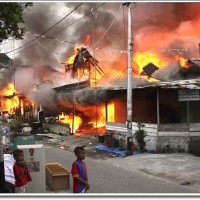
Seeing all the electrical transformers "blow" is quite a sight. My friends and I were coming back from a show in Hollywood on the night of the Landers quake in 1992. After stopping and eating at nasty Denny's we were on the freeway when the quake (7.3 magnitude) struck (4:57 am) We could just see huge bright flashes EVERYWHERE. We were freaking out. It's something you probably have to witness yourself to understand how gnarly it was. At the same time the my friend who was driving was kinda swerving and said "Dude! Earthquake!" We pulled to the side and turned on the radio station. The radio DJ was FREAKING OUT! That's when we learned for sure a major earthquake just hit. We were about 15 minutes away from our city so we rushed home. One of my buddies ended up crashing at my house that night and as soon as we were falling asleep...BOOM! The first quake triggered another big quake (6.8) out of Big Bear at 8:05 am. I remember sitting up and my friend was already standing up in a "surfing" position staring at me with the most freaked out look on his face. We calmly but quickly got out of the house, along with my dad and stepmom and rode out the rest of the quake. Man, what a night. I'll never forget it. On a side note, when your outside during a major quake, you can feel the ground "waving" like rough seas during the quake. The ground feels almost like jello. Also, a lot of times I see ignorant people online saying that the transformers blowing are "earthquake lights". This is nonsense. I assure you that it's the transformers blowing.
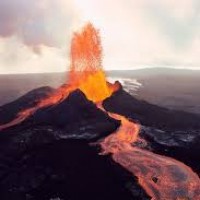
Magma and lava trying to reach the surface of the earth cause the earth to tremble and shake, and the extremely high temperature of the magma both can play a hand in causing earthquakes. Volcanoes don't even necessarily need to erupt for the magma to cause an earthquake, because the magma under the earth still has a bit of an influence on the volcano itself, so volcanic quakes can still happen when the said volcano does not erupt.
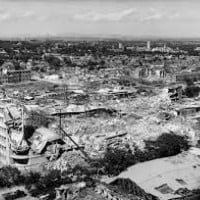
The death toll of this earthquake that occurred in China, is about 830,000 and could be felt in about an area of 850 kilometers. Shaanxi was not the only area that felt it. Anhui, Hebei, Henan, Hunan, and Shanxi (all other areas in China) were damaged by it, as well. A few others were, too.
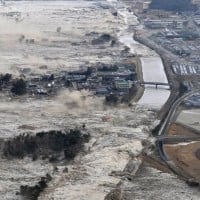
Earthquakes make massive amounts of water move rapidly, kind of like a little kid splashing in a bathtub, or several people doing a cannonball in a pool, at once. In the deeper ends of oceans, the traveling of the waves isn't obvious, and sailors at sea don't sense tsunamis under them. They only notice after they come ashore, to wherever their home may be, and find the beaches destroyed by a tsunami. Tsunamis can also go far, with earthquakes from the beaches of North and South America doing damage to nations as distant as Japan and perhaps even China.
There was a belief in "earthquake weather", that because a large amount of air was trapped underground, the weather would be hot and calm before an earthquake. A later theory stated that earthquakes occurred in calm, cloudy conditions, and were usually preceded by strong winds, fireballs, and meteors.
I would've only thought it happened in Winter for some reason. Guess I'm wrong.
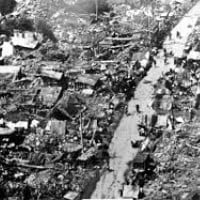
This earthquake killed roughly 240,000 people and wrecked about 80% of the of Tangshan skyline. It also was the harbinger of the mass flooding in coal mines in Tangshaan, and their coal industry needed an entire year to rebound. This quake also dealt destruction to railroads that connect Tangshan to the rest of China, most importantly Beijing. This isolated Tangshan from the rest of China, and made sure no help was coming for quite a while.
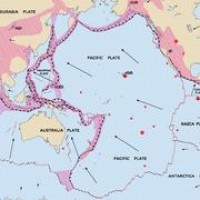
That's the answer to this question that is not as clear as it should appear. For the most accurate answer, you must paraphrase this question four different ways, such as "Which country can we locate the most earthquakes in?" You'd get Japan. The nation is in an active seismic area, and they have the most seismic network.
Yeah. Unfortunately the home of Anime and Nintendo has the most earthquakes. It's nothing to do with the fact Japan is an island and it's just about the plates.
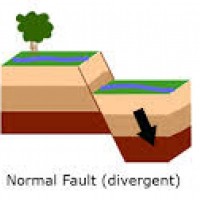
The Earth's crust is fragmented into about fifteen major blocks referred to as "tectonic plates". These slabs form the lithosphere, which is made of the crust (continental and oceanic) and the upper part of the mantle. Tectonic plates move quite slowly to each other, (usually a few centimeters annually), but they still cause a heap of an earthquake at the plate boundaries, which results in earthquakes.
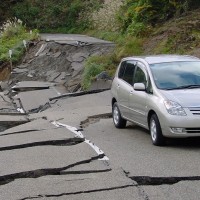
Particularly, sewage water produced by the oil industry sent into put in storage wells caused underground, which was a fracture caused by the Wilzetta fault. The fracture resulted in a category 5.5 earthquake, with a previous size 4 aftershock. Two people dealt with severe injuries caused by the earthquake and there were no deaths. On the other side of things, fourteen houses in Prague, Oklahoma, dealt with multiple degrees of property damage, as well as St. Gregory's University in Shawnee.
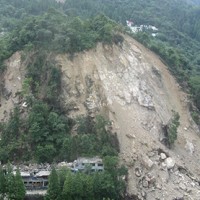
Earthquakes cause landslides by both head-on fractures of the earth and by sustained trembles of the earth on rocky slopes. These landslides can destroy buildings in their paths, get in the way of roads and railroads, or knock done week hut, as the rocks come to a tumblin'. They can put dams in rivers from time to time, too, like in August 17, 1959, Hebgen Lake earthquake in Montana.
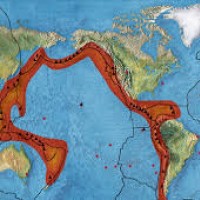
That's right. It's not just the largest fault line; largest and most active! It stretches from New Zealand, to all the way around the eastern part of Asia, to most of North America (exception being Mexico), and all the way down to the the bottoms of Chile and Argentina. The Ring of Fire is 40,000 kilometers or 24854.848, in terms of length. And it is the harbinger of more than 90% of earthquakes.
I fell down into a burning ring of fire... On a more serious note although much of New Zealand experiences a lot of earthquakes Auckland where I live doesn't really get any.